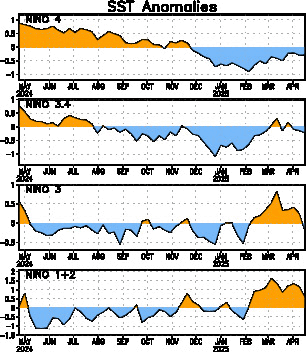cycloneye wrote:Its early but these are the most important and reliable ENSO models,CFS and POAMA models and both show the trend towards neutral ENSO starting by late spring or early summer.Lets continue to follow the data to see if the proyections are good about El Nino fading by late spring 2010.
Australian model POAMA
NCEP model CFS
I think we will have to wait to around March to see how things stand at that point about if El Nino starts to diminuish or it hangs a little longer at moderate status.I am partly with Derek in terms of still having El Nino when June 1 2010 arrives,but I differ that it will be like it is at this time,moderate.Lets wait and see the trends to see if El Nino starts to fade faster,slower or mantains to then start to make our projections about what to expect in the 2010 Atlantic Hurricane Season.












